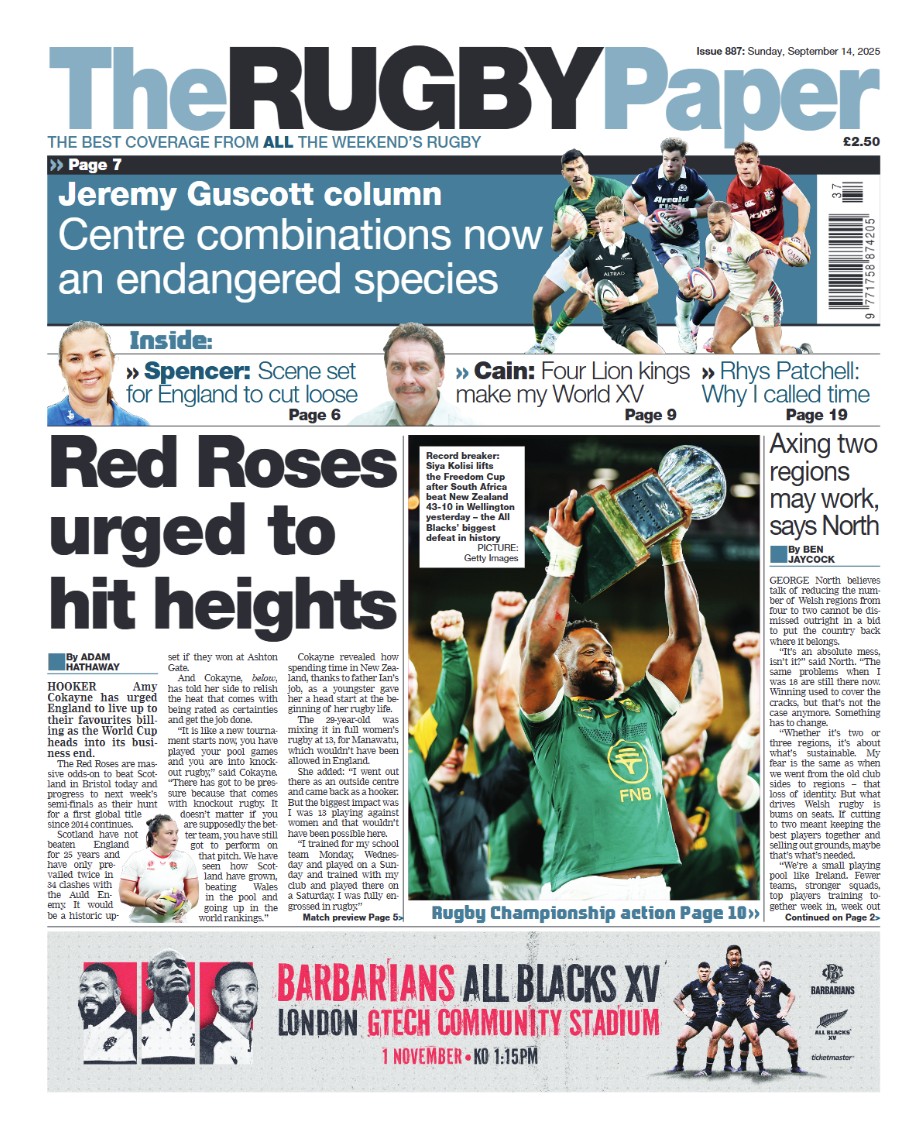
Rugby originated in England, the United Kingdom, in the early 19th century as a team sport that required close contact. Body contact and physicality are major features seen in this game. The greatest height to reach in this sport is the World Cup, where international teams battle each other to compete and win. The play is open to both male and female interested athletes, with an aggregate of over 5.7 million people participating in the game worldwide.
A Rugby match includes a team of 15 players competing against another team of equal numbers with a ball on a rectangle-shaped pitch. Players carry this oval-shaped ball in their hands and run around the field, attempting to score points.
Professionally, based on recent statistics, about 3 million people are registered players under the governing body of the International Rugby Football Board (IRFB). England hosted the first official game in 1871, and since then, other nations have adopted the exercise as a part of their sporting activities.
The spread of the Rugby Union has integrated deep into schools, associations, leagues, and provinces, gradually achieving global acceptance and recognition. Online betting sites have even incorporated sports betting odds for game supporters to place bets. This article will provide details, play objectives, rules, and our recommended expert tips for winning a rugby match.
Objectives of the Game
The goal of each rugby match is to outscore your opponents within the 80-minutes time limit. The elite group with the most points at the end of the game is declared the winner. Some games may result in a tie in a case where the total number of points is equal.
In ‘different stages of play,’ the team in possession of the ball must carry the ball downfield. Players can never pass the ball forward, but they can run ahead with it or kick it forward to hunt it down. The opposition team must tackle the assaulting team and attempt to regain possession of the ball.
Like every other sport, players in this game have different positions with roles to perform for the team’s success.
How to Play – Players and Equipment
Every professional rugby team consists of 15 players. The team is divided into two main groups; the forward and the back. There are eight forward positions, seven backs, and about eight substitutes in position in the team.
Each role is given a name and an attached responsibility. The fifteen players divided into two sections include:
1. The Forwards
- Hooker: It’s a vital position in the attacking play responsible for securing the ball during a scrum.
- Prop: The prop’s role is to assist the hooker on scrums and provide a good balance for the jumpers. They possess strength and power used in ruck/mauls exercises.
- Second Row: They consist of two locks and are the tallest set of players
- Flanker: There are two flanking positions in the back row with a major role in retaining control of the ball at ‘turnovers.’
- Number Eight: The responsibility of this position is to create a link between the frontline and backline when attacking.
The Backs
- Scrum-Half: This position is crucial to the attacking line, retrieving the ball from inside the lineout, passing it onto the fly-half, and acting in place of a fourth forward.
- Fly Half: Team performance is dependent on the activities of this role in decision-making and effective communication.
- Inside Center: They tackle opposing attackers and use their strength and speed to overcome defenses.
- Outside Center: Like the inside centers, they tackle aggressively and operate on the outside of the center-backs.
- Wingers: The role of these individuals is to complete tries and score points. They are the fastest and most flexible on the run.
- Full Back: They are the final resort in defense when opponents attempt to penetrate the backline. They should be good catchers and possess strong kicks.
The playing area is divided into three segments – the main play segment and two-goal segments with calculated diameters. The pitch is 70 meters in width and must not be over 100 meters. The goal is an ‘H’ shaped structure between five to six meters.
Equipment used in the game is head guards, pads, gum shields, colored jerseys, matching socks, and shorts.
Two forty-minute halves are played, with a five-minute halftime break. The match is overseen by one referee, who is assisted by two touch judges. There are no exclusive timeouts, except at the discretion of the referee, who may allow an injured player one minute to determine whether or not to continue playing.
Kickoffs are delivered from the middle of the pitch to start the game. Once the whistle blows, the team in possession takes every opportunity to kick a goal. When a player hits the ball to the ground in the rival’s in-goal, a try is scored, and the team receives five points.
Following a try, the side is given the option to score goals by hitting the ball over the opposition’s crossbar and between the goalposts, resulting in an additional two points (conversion points). A line perpendicular to wherever the ball landed must be used to kick the ball. If the opposing side performs a penalty at any point during the game, the aggrieved team is given a chance at three points by scoring a dropkick.
Terminologies and scoring methods used in rugby are the try, conversion, a penalty kick, a drop goal, cap, blindside, knock-on, and others known to the sports enthusiasts.
Tips for Winning a Match
Several ideas are recommended to win a match, especially when playing against stronger opposition teams. We’ve gathered expert tips for you, and in practice, these tips have proven their actual worth.
- Take advantage of the opponent’s flaws
Every team has areas where they can be penetrated. Care must be taken to spot these weaknesses and utilize them to your team’s advantage.
- Complement your abilities
The most skillful players should be picked while selecting a squad for a rugby match. The team’s core strength should be held in high regard as performances matter majorly on what individual players can achieve.
- Press the opposition
Create a press ball style, either by pick and go superb footwork or chipping over the top to overcome your opponent. The backline must be stopped from leaving their line to defend, and when the defense is scattered, an attack is easier. A better way of applying pressure is by making good kicks.
- Examine the game
Quality decision-making is key in the game of Rugby, and players are expected to scan the tactics used by the opposing team. There is enough time to decide what to do, when to block, compete for the ball, and drive through.
- Make good use of set pieces
Scrums and lineouts create a solid foundation for any squad. Given your skills, push harder on your tactics. Consider sledding lower and harder in defense and putting in with the rapid in-and-out ball.
- Close the game
Penalty kicks, drop goals, and ‘pick and go’ are different ways to close a game, but note that this tip is more important in cases where you have the advantage or are ahead in points.
Conclusion
Although rugby is a game of physical strength and intense body contact, the use of quality skills and technique can supersede the former. Implement these ideas and remain focused on achieving success for your team.

1 Comment
You must be logged in to post a comment Login
Leave a Reply
Cancel reply
Leave a Reply
You must be logged in to post a comment.

Miscellaneous
The Best Rugby Themed Games
Features
OSCAR WILSON




















Pingback: cheri up cosmetics